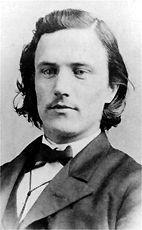Royal Commission on Chinese Immigration

On the 4th of July in 1884, Prime Minister Sir John A. Macdonald ordered a Royal Commission on Chinese Immigration to investigate whether restrictions should be imposed upon Chinese people in Canada. Two commissioners were appointed: the Honorable Joseph-Adolphe Chapleau, Doctor of Laws and Secretary of State of Canada, as well as Honorable John Hamilton Gray, Doctor of Civil Law, Judge of the Supreme Court of British Columbia.

In Canada, anti-Chinese sentiments were growing in the public sphere and Sir John A. Macdonald couldn't ignore the discrimination which called for the creation of anti-Chinese policies. The commissioners heard from fifty-one witnesses who submitted their testimonies to twenty-seven questions regarding Chinese in Canada, and what policies should or should not be implemented to restrict them. Each of these witnesses gave their accounts and the commissioners gathered their answers to draw upon for their conclusions. However, a majority of their interviews were concentrated in Victoria rather than in the countryside where Chinese men competed for jobs, and many felt that this lost credibility for the report. Although they did venture to other cities, like Nanaimo and New Westminister, but none of the voices from those cities many it into the final report. They held interviews in some locations in the states as well, notably San Francisco and Portland.[1]
Inquiry Findings
While a majority of the witnesses gave negative testimonials about Chinese immigrants, some individuals were of the opinion that there were upsides to Chinese labor. William Babcock, a resident of San Francisco, gave a overall positive testimonial citing that Chinese labor was cheaper, and that they do not get involved with politics as they are intending to return to their own country after amassing some wealth. As well, in some jobs where there is a high turnover rate for servants, the Chinese labourforce are reliable and tend to stay.[2] Of the twenty respondents who believed that Chinese people had helped to develop the province, ten believed that they had a negative impact. Regardless of a positive or negative impact, many who felt the Chinese had impacted provincial development felt that their presence was still needed, except for three people.[3]
Each of the commissioners have their own personal reports in the commission. In the Honourable John Gray's personal report titled, "Respecting Chinese Immigration in British Columbia", he outlines the three distinct categories of public opinions on Chinese immigrants:
"1st. Of a well-meaning, but strongly prejudiced minority, whom nothing but absolute exclusion will satisfy.
2nd. An intelligent minority, who conceive that no legislation whatever is necessary – that, as in all business transactions, the rule of supply and demand will apply and the matter regulate itself in the ordinary course of events.
3rd. Of a large majority, who think there should be moderate restriction, based upon police, financial and sanitary principles, sustained and enforced by stringent local regulations for cleanliness and the preservation of health.”[4]
Conclusions
Despite anti-Chinese sentiments growing in Canada, Chapleau and Gray did not see Chinese immigration as a hindrance to British Columbia, instead viewing their labor as necessary. They did not suggest the outright exclusion of Chinese immigrants, rather they opted for the consideration of a $10 head tax upon arrival in Canada.[5] With the funds collected from the head taxes, the government could invest in a health inspector to be stationed at the ports of entry to examine the health of those who entered Canada, protecting against the spread of disease.[6]
Following the Royal Commission was the Chinese Immigration Act of 1885 which looked at the recommendations made by Chapleau and Gray. A head tax of $50 was set, much higher than the $10 suggested in the commission.
See also
References
- ^ Roy, Patricia E. (2014). White Man's Province : BC Politicians and Chinese and Japanese Immigrants, 1858-1914. UBC Press. p. 57. ISBN 978-0-7748-5463-4. OCLC 1042254860.
- ^ Chapleau, Joseph-Adolphe, Sir, 1840-1898. Gray, John Hamilton, 1814-1889. (1885). Report of the Royal Commission on Chinese Immigration report and evidence. Printed by order of the Commission. pp. CI–CII. ISBN 0-665-14563-2. OCLC 1083487977.
{{cite book}}: CS1 maint: multiple names: authors list (link) CS1 maint: numeric names: authors list (link) - ^ Roy, Patricia E. (2014). White Man's Province : BC Politicians and Chinese and Japanese Immigrants, 1858-1914. UBC Press. p. 58. ISBN 978-0-7748-5463-4. OCLC 1042254860.
- ^ Chapleau, Joseph-Adolphe, Sir, 1840-1898. Gray, John Hamilton, 1814-1889. (1885). Report of the Royal Commission on Chinese Immigration report and evidence. Printed by order of the Commission. pp. CII. ISBN 0-665-14563-2. OCLC 1083487977.
{{cite book}}: CS1 maint: multiple names: authors list (link) CS1 maint: numeric names: authors list (link) - ^ "Chinese Head Tax in Canada | The Canadian Encyclopedia". thecanadianencyclopedia.ca. Retrieved 2019-11-23.
- ^ Chapleau, Joseph-Adolphe, Sir, 1840-1898. Gray, John Hamilton, 1814-1889. (1885). Report of the Royal Commission on Chinese Immigration report and evidence. Printed by order of the Commission. pp. LXXXVII. ISBN 0-665-14563-2. OCLC 1083487977.
{{cite book}}: CS1 maint: multiple names: authors list (link) CS1 maint: numeric names: authors list (link)
